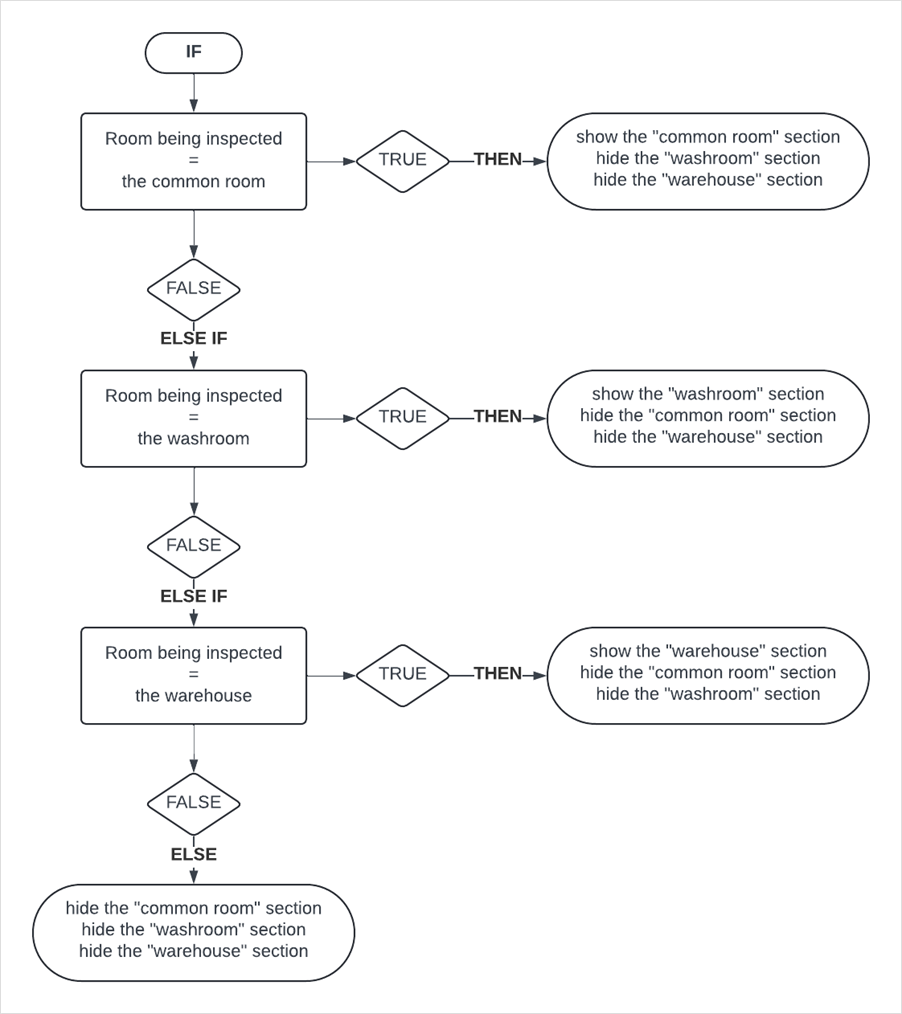Conditional Logic
Available on the Advanced and Enterprise tiers:
Contents
What is Conditional Logic?
Every workday involves making thousands of decisions based on past information and current conditions. This is Conditional Logic. Applying Conditional Logic adds intelligent automation to your mobile forms. You can use Conditional Logic to provide context for your field technicians, enhance their effectiveness, and enforce a workflow.
Conditional logic![]() Conditional logic is a tool in the Form Builder that establishes the workflow of a form. By using the "If This, Then That" structure, questions or sections will be displayed, hidden, or automatically populated based on answers to preceding questions. is based on the structure If This, Then That. You create a task or action that happens when certain conditions are true. Set up the condition, and then choose the action.
Conditional logic is a tool in the Form Builder that establishes the workflow of a form. By using the "If This, Then That" structure, questions or sections will be displayed, hidden, or automatically populated based on answers to preceding questions. is based on the structure If This, Then That. You create a task or action that happens when certain conditions are true. Set up the condition, and then choose the action.
Demo Video
Conditional Statements
The basis for Conditional Logic is "If This, Then That." If This is true, then That action will happen. This is a conditional statement. Using the example of a site inspection form:


Else If the room being inspected equals the washroom, then show the "washroom" section, hide the "common room" section, and hide the "warehouse" section.
Else If the room being inspected equals the warehouse, then show the "warehouse" section, hide the "common room" section, and hide the "washroom" section.
Else hide the "common room" section, hide the "washroom" section, and hide the "warehouse" section.
Note: To make sure your Conditional Logic rules work as intended in the field, test them thoroughly before you deploy the form. Test the form under a variety of conditions to validate the field user experience.
Benefits of Conditional Logic
Conditional Logic can be used to build more powerful and dynamic forms that react to the context of a job, in real-time. As mobile users fill out the form, the flow and requirements can change based on their answers.
This helps you to:
-
Build forms with different branches, allowing you to merge similar forms into one.
-
Require additional information in specific scenarios, enforcing different requirements in different contexts.
-
Hide information that is irrelevant to the current task, streamlining a user’s workflow.
-
Guide users to complete tasks correctly and in the correct flow, reducing the time it takes to train users to complete a job properly.
Supported Operators and Actions
See the full definitions of available operators and actions.
| If... (an answer) | Then... |
|
|
|
If... (a selected language) (Multi-Language add-on only) |
|
|